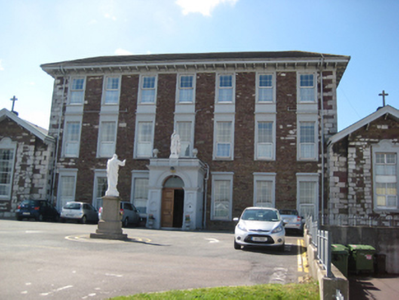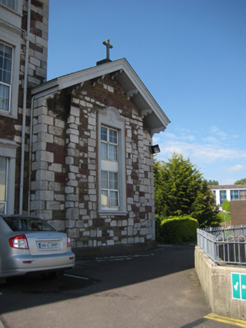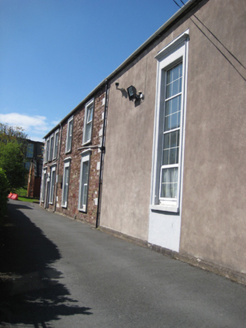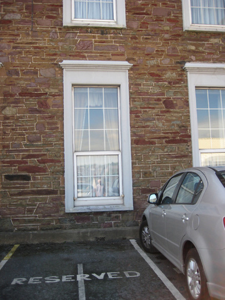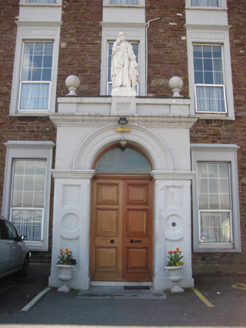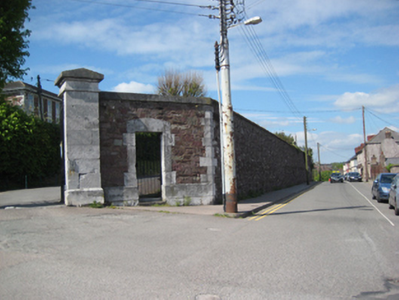Survey Data
Reg No
20862023
Rating
Regional
Categories of Special Interest
Architectural, Artistic, Social
Original Use
Convent/nunnery
In Use As
Convent/nunnery
Date
1840 - 1850
Coordinates
167089, 72700
Date Recorded
26/04/2011
Date Updated
--/--/--
Description
Detached seven-bay three-storey convent, built c.1845, having single-bay single-storey gable-fronted flanking pavilions to north and south and flat-roofed advanced entrance porch at centre of front (east) elevation. Four-bay chapel to rear (west). Numerous later extensions to the rear and to the north. Hipped slate roofs with pitched artificial slate roofs to pavilions, timber bargeboards to gables and cast-iron gutters on overhanging bracketed eaves. Squared coursed red sandstone and limestone walls with dressed stone quoins, render eaves course and dressings. Uncoursed squared red sandstone and limestone to front elevations at pavilions, unpainted render to pavilion side (north and south) elevations, continued in rubble stone with dressed stone quoins to rear (west). Square-headed window openings in render panels having flat headed entablatures and aprons at second floor level, engraved Latin wording at first floor level window heads, render sills and replacement uPVC windows throughout. Round-headed door opening at projecting central porch with moulded render archivolt springing from moulded render impost course, surmounted by moulded cornice having parapet over holding statue of St Vincent flanked by orbs. Plain-glazed overlight over timber panelled double leaf doors flanked by engaged pilasters having recessed panels. Tiled porch with limestone threshold. Set in large complex of convent and school buildings, bounded by rubble sandstone and limestone walls.
Appraisal
A substantial and well-detailed mid nineteenth-century convent, which retains its impressive scale and character despite being extended and altered. The contrast between the robust masonry and the pale render dressings creates an attractive textural and tonal contrast. The extensive good quality detailing is indicative of the increasing wealth and status of the Roman Catholic Church in Ireland at the time of construction. The high level of craftsmanship demonstrated in the construction of the convent contributes to its artistic significance. It occupies an elevated position and the imposing boundary walls continue to create a strong impression in the district.

